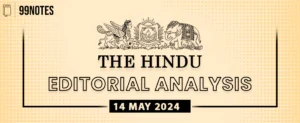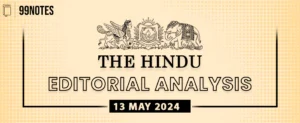Topic: GS2 – Social Justice – Vulnerable sections GS2 – Governance – Government policies – Interventions for development in various sectors This topic is relevant for both Prelims and Mains in the context of understanding demographic shifts, particularly the aging population. |
| Context: |
|
Implications for Health and Social Care Systems:
- The decreasing household size in India, from 5.94 in 2011 to 3.54 in 2021, coupled with a growing number of older people who may suffer from chronic illnesses, necessitates a reset of the health and social care system.
- As families become smaller and older, there’s a growing concern about providing care for seniors at home.
- This shift poses challenges as it blurs the lines between social care and health care, necessitating external assistance in caring for older individuals at home.
Evolving Home-Based Care Practices:
- The scope of services provided at home has expanded significantly, ranging from assistance with daily activities to routine nursing care and specialized care.
- According to a NITI Aayog report, healthcare offered at home has the potential to replace up to 65% of unnecessary hospital visits and reduce hospital costs by 20%.
- However, care practices at home lack standardization, and well-trained caregivers with an empathetic outlook are in short supply.
Policy Interventions Needed:
To better organize care at home, several policy interventions are necessary.
- Firstly, there is a need to recognize “home” as a place for providing care and as a “place of work” for caregivers, which has implications for the rights and safety of both users and providers.
- Secondly, the terms of engagement and treatment protocols for home-based care must be tailored to the home environment.
- Thirdly, there is a need to streamline vocational training for caregivers and establish clear career progression pathways.
- Finally, comprehensive policies on home-based care should encompass aspects such as provider registries, transparency, accountability, grievance redressal mechanisms, and insurance coverage.
Addressing Gender Disparities:
- The policy should also address gender disparities, as women in India tend to outlive men by three years on average.
- With the sex ratio of older people projected to increase, particularly among older single women, the policy should cater to their specific needs to ensure they can live respectable and independent lives.
Role of Government Ministries and Legislative Efforts:
- The Ministry of Health and Family Welfare (MoHFW), Ministry of Social Justice and Empowerment (MSJE), and Ministry of Skill Development and Entrepreneurship (MSDE) have pivotal roles in addressing the challenges of an aging population.
- Greater collaboration among these ministries could facilitate necessary reforms.
- Additionally, legislative efforts such as the Maintenance and Welfare of Parents and Senior Citizens (Amendment) Bill, 2019, seek to regulate home-based care for older people but have yet to be passed.
Balancing Focus on Youth and Older Population:
- While efforts to make India’s youth population “future-ready” are important, equal attention should be given to the aging population.
- Learning from countries like Japan, where systems to care for older people are integral for economic productivity, emphasizes the importance of addressing the needs of older individuals as a societal responsibility.
- This reciprocal care acknowledges their lifetime contributions to society and reflects moral and ethical values.
| What are the Problems Associated with the Ageing Population? |
Social:
|
| PYQ: Performance of welfare schemes that are implemented for vulnerable sections is not so effective due to absence of their awareness and active involvement at all stages of policy process – Discuss. (250 words/15m) (UPSC CSE (M) GS-2 2019) |
| Practice Question: Discuss the challenges and policy implications of India’s rapidly aging population, highlighting the need for comprehensive reforms in the healthcare and social welfare sectors. (250 words/15 m) |











